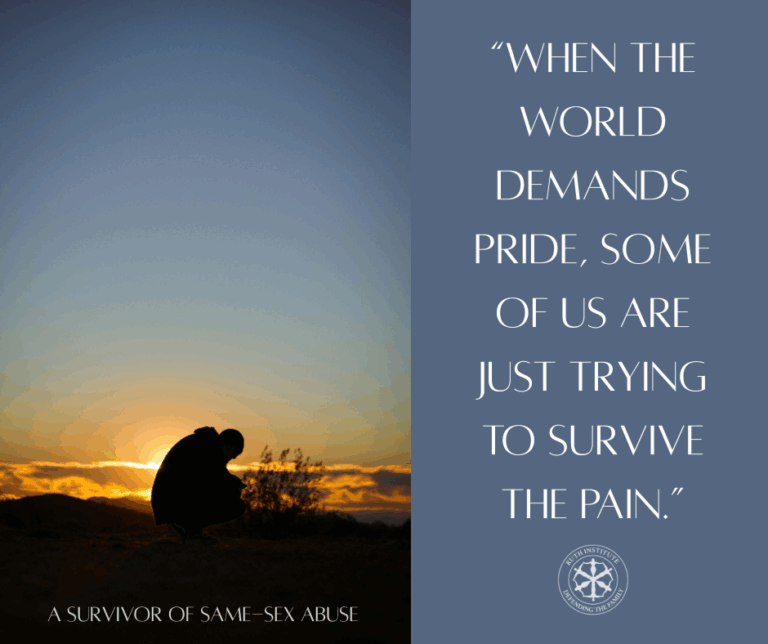By Jenet Jacob Erickson, a Ruth Inst. Circle of Experts member
Published: May 1, 2016 at the Deseret News
Feminism swept into American culture during the 1960s in the name of women’s equality. While much has been said about feminist efforts to alter gender
roles and workplace dynamics, scant attention has been paid to the dramatic changes wrought in response to inequalities in sexual relationships. Feminism
sought an end to the double standard that winked at promiscuity in men while condemning it in women. But in response, society made a tragic misstep.
Rather than seek an equal standard by demanding sexual fidelity from men, the feminist movement encouraged women to “imitate the promiscuous tendencies of men.”
Sexual relations outside of marriage became a mark of women’s independence. Natural feelings of commitment and relational interdependence, often associated
with female sexuality, were condemned as outdated norms that subordinated women and made them dependent on men. No more. As Steven Rhoads aptly summarizes,
women were told to negotiate sexual relations for personal desire and pleasure, rather than for love and familial bonding.
Their arguments worked. In Jean Elshtain’s pithy expression, “the new woman” became “the old man” Though premarital sexual relations began to be more common
after World War II, it was still socially frowned upon. And sexual relations between people who did not plan to marry was unacceptable. But from 1943
to 1999, with widely available contraception and abortion, attitudes toward premarital relations changed dramatically,
particularly among young women, whose approval increased from 12 percent to 73 percent (young men’s increased from 40 percent to 79 percent). This
trend has continued, with millennials holding the most sexually permissive attitudes of any generation.
Such dramatic change has little to do with equality. Rather, it represents a fundamental shift in how our society sees sexuality itself. Human intimacy
had long been respected as the power to bond men and women and create new human life. That power demanded boundaries to protect those who could be
victimized by it and to channel it into the formation of families that are the building blocks of communities and nations. But in the wake of the 1960s,
sexuality was socially transformed from a respected power that demanded boundaries and responsibility to a personal right that demanded free expression.
And there begins the irony of so called “sexual liberation.” Perhaps nothing has brought more devastation to modern family life than the dramatic changes
in social norms around sexual behavior. In 1960, the out-of-wedlock childbearing rate was 5 percent — in 2014, it was 41 percent. In the same period, the rate of cohabitation increased more than 17 times, with 50 percent of
women today between ages 25-39 currently cohabitating or having cohabitated sometime in the past. This has had significant implications for marriage.
Premarital sexual relations with someone other than one’s spouse have consistently been linked to divorce.
And it is children and their mothers who have borne the brunt of the negative outcomes associated with these changes. Children of single mothers “have
negative life outcomes at two to three times the rate of children in married, two-parent families.”
Children whose parents divorce don’t fare much better, even when their parents remarry.
Children living with cohabitating biological parents are at a similar risk for negative outcomes,
in part because cohabitation is associated with high breakup rates (50 percent within five years), lower household incomes and higher levels of child
abuse and domestic violence. Mothers in cohabitating, step- and never-married family structures are also at much greater risk for poverty and unhealthy and unsafe relationships.
Among college women, one in four undergraduates last year reported being physically forced, or threatened with force, into unwanted sexual contact.
Feminist Sally Cline concludes that what the sexual revolution achieved was “not a great deal of liberation for women but a great deal of legitimacy for male promiscuity. …”
That legitimizing of promiscuity has left many victims, including men.
Turning back such a tide might seem impossible. But there is one influence that consistently stands out as making a difference: religion. Weekly church-goers
are much less likely to have premarital sexual relations and, for those who do, to restrict those relations to their future spouse. Adults who attended
church weekly during adolescence, as well as those who consider religion to be “very important,” are eight times more likely to be abstinent compared to those who do not.
This influence should not be taken lightly. To a culture that says there is no way to proscribe sexual behaviors, religion provides an alternative, channeling
the sacred power to procreate into the formation of families, and protecting those who would be victimized by its misuse.
Jenet Erickson is an affiliated scholar of the Wheatley Institution and a former assistant professor at Brigham Young University.



